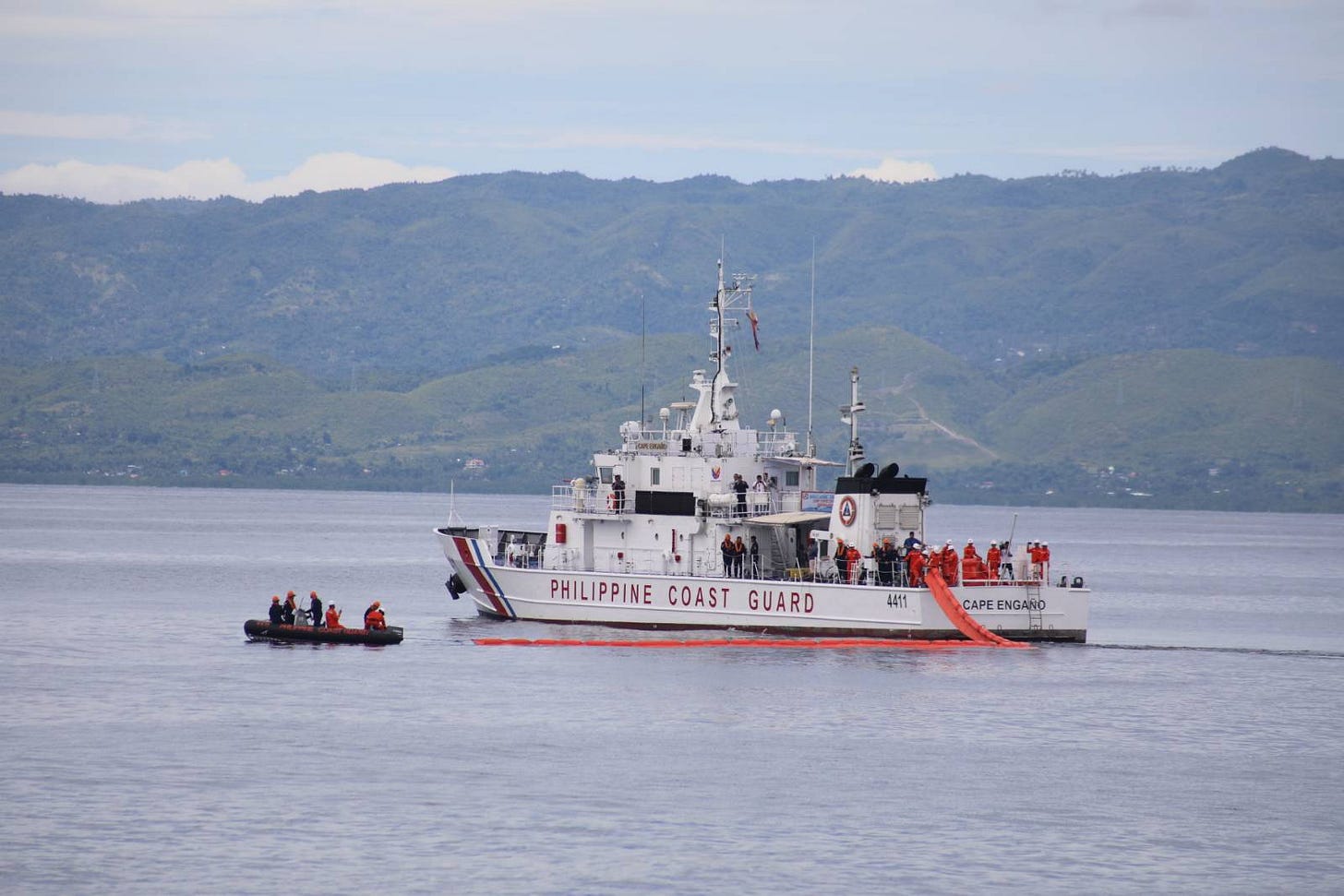This piece is freely available to read. Become a paid subscriber today and help keep Mencari News financially afloat so that we can continue to pay our writers for their insight and expertise.
Recent Coast Guard surveillance flight in the West Philippine Sea showed disturbing developments within Bajo de Masinloc. There appeared to be structures being built in the rocky outcrop, less than 150 nautical miles west of Zambales coast.
Any structures within Bajo de Masinloc is a red line, not only for the Philippines but for the United States, as well. Bajo de Masinloc is directly opposite of Subic Bay, site of former US Navy base, home of the US 7th Fleet until November 1992. Although the US had abandoned the naval base, US Navy carriers, destroyers, submarines, and amphibious assault vessels continued to dock in the former naval base due to its deep, natural harbor.
Truth matters. Quality journalism costs.
Your subscription to Mencari (Australia) directly funds the investigative reporting our democracy needs. For less than a coffee per week, you enable our journalists to uncover stories that powerful interests would rather keep hidden. There is no corporate influence involved. No compromises. Just honest journalism when we need it most.
The US Congress has authorized the building of a munition factory that will supply US military requirements in the Indo-Pacific region, closer to where the action could happen. Thus, increased Chinese presence and activities around Bajo de Masinloc threaten US and Philippine interests. It is a potential source of regional instability, a major flashpoint.
If it is proven China put up structures within Bajo de Masinloc should also be a major concern for other Southeast Asian states, like Brunei, Malaysia, and Vietnam, the other Southeast Asian states with conflicting claims in the South China Sea.
It could be clear violation of the 2002 informal code of conduct - the Declaration of Conduct of Parties in the South China Sea (DOC), a political document which China signed with the 10 members of the Association of Southeast Asian Nations (ASEAN) in Phnom Penh. The DOC prohibits new occupation and building of structures in the contested South China Sea. Before the informal code, China was occupying seven features, which it expanded into artificial islands in 2012.
During the same year, Beijing seized control of Bajo de Masinloc, forcing Manila to seek arbitration in The Hague in 2013. Three years later, the international arbitration tribunal ruled in favor of the Philippines, nullifying China’s illegal and excessive nine-dash-line claims.
Beijing ignored the ruling and proceeded to increase its presence and it illegal, coercive, aggressive, and deceptive (ICAD) activities in the disputed waters. China has become bolder, violating Philippine territorial waters in Pagasa island when Chinese Coast Guard vessels harassed local vessels - ramming and spraying water cannons - just within 2 nautical miles of the Philippine held feature.
Pagasa island, the largest feature Manila occupied, had a 12 nautical miles territorial waters under the 1982 UN Convention on the Law of the Sea (UNCLOS). China is a signatory to UNCLOS. Every time the US conducts freedom of navigation patrol (FONOPs) operations within 12 nautical miles of Chinese occupied features, Beijing protests. But its own maritime vessels come close within 2 nautical miles off Pagasa island.
The Philippines could only watch helplessly because it has no assets to drive away the intruding Chinese vessels Apart from tightening controls in Bajo de Masinloc and intense harassment in Pagasa, China has cordoned off Escoda Shoal, near Palawan, denying local fishermen of their livelihood.
Chinese presence and activities within the Philippines’ maritime zones are concerning. Australia, Canada, France, and the United States have condemned China’s coercive activities and attempts to change the status quo in the South China Sea. However, diplomatic and political actions are not enough. China continues to ignore nearly 50 diplomatic protests filed by the Philippines.
Stronger actions are needed, but the Philippines cannot do it alone with its limited assets. It is about time the United States and its allies to show muscle in the disputed waters. The US and its allies should not wait for China to reclaim Bajo de Masinloc and convert it into a military garrison like the other seven features. It poses a real danger not only for the Philippines but to the world that uses the sealanes near Bajo de Masinloc.
Once China reclaimed and turn Bajo de Masinloc into a military facility, that would impact global trade. About $3 trillion worth of seaborne trade passes through the South China Sea. It will disrupt global economy and threaten global security. The Philippines must increase the frequency and number of maritime cooperative activities with the US and like-minded states around Escoda Shoal and Bajo de Masinloc.
The US and its allies must also conduct unilateral and multilateral FONOPs in these areas to discourage China from putting up structures. The US and its allies should also increase surveillance in these areas and stop China from reclaiming and building structures in Bajo de Masinloc. The US and its allies must also step up training, exercises, and intelligence sharing to enhance maritime domain awareness.
The US and its allies should also transfer more assets, including drones to level up the Philippines’ asymmetrical response to China. There should be more pro-active activities too. The Philippines together with the US and other allies must stop China, at all cost, and prevent it from reclaiming and building structures on Bajo de Masinloc. They should not allow China to gain control of the South China Sea.
The opinions expressed are those of the author and do not necessarily represent the views of this publication.
Got a News Tip?
Contact our editor via Proton Mail encrypted, X Direct Message, LinkedIn, or email. You can securely message him on Signal by using his username, Miko Santos.
Sustaining Mencari Requires Your Support
Independent journalism costs money. Help us continue delivering in-depth investigations and unfiltered commentary on the world's real stories. Your financial contribution enables thorough investigative work and thoughtful analysis, all supported by a dedicated community committed to accuracy and transparency.
Subscribe today to unlock our full archive of investigative reporting and fearless analysis. Subscribing to independent media outlets represents more than just information consumption—it embodies a commitment to factual reporting.
Not ready to be paid subscribe, but appreciate the newsletter ? Grab us a beer or snag the exclusive ad spot at the top of next week's newsletter.







